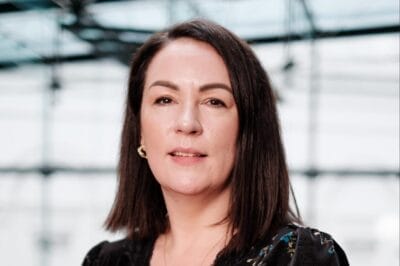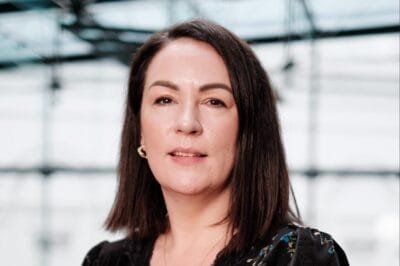
Ireland’s energy future is approaching a critical juncture. EirGrid forecasts a 45% increase in electricity demand between 2023 and 2034, driven by the rapid rise of data centres, electric vehicles, and economic growth. But as demand soars, the national grid is being pushed to its limits, struggling with renewable integration challenges, ageing infrastructure, and climate-related disruptions.
The impact of Storm Éowyn, which left 715,000 homes, farms and businesses without power, exposed just how vulnerable Ireland’s energy system has become.
While grid upgrades are underway, such as the North-South Interconnector, progress has been slow. So, what can businesses do now to protect themselves from power disruptions and grid delays?
Enter microgrids: Self-contained, local energy networks that can operate independently from the traditional grid. For businesses and communities alike, they offer greater energy security, lower costs, and a more resilient path.
Microgrids, More Than Just Backup Power
Nearly half (46%) of UK and Irish businesses identify energy security and resilience as a significant risk, underscoring the urgent need for more reliable and adaptable energy solutions like microgrids.
In Ireland, where grid congestion and renewable integration challenges are growing, microgrids can help bypass infrastructure bottlenecks, accelerate the rollout of wind and solar, and provide critical backup to businesses during outages. When paired with storage technologies, they can stabilise supply, reduce reliance on fossil fuels, and insulate users from volatile global energy markets by enabling local generation and storage of clean power.
With Ireland ranking third-highest in electricity prices across Europe, the case for investing in off-grid, prosumer energy solutions has never been stronger. For businesses – especially those in rural or grid-constrained areas – these systems offer a viable path to energy independence, cost stability, and long-term sustainability.
Take Finland’s Citycon Lippulaiva development as an example, where a local energy system is supported by advanced digital monitoring and intelligent energy management tools. This mixed-use urban hub – featuring a shopping centre, metro station, bus terminal, and residential units – has successfully optimised resilience, sustainability, and energy efficiency. The microgrid is projected to pay back its €3 million investment within five years, thanks to a 14% annual reduction in energy costs.
From Strain to Strength: Rethinking Energy for High-Demand Users
Microgrids are not just a cost-saving solution; they’re becoming an essential tool in Ireland’s energy transition and economic growth. EirGrid has warned that growing grid congestion and delays in new connections could significantly hinder progress toward a net-zero energy system.
Data centres, in particular, are under increasing scrutiny due to their soaring energy demand and pressure on the grid. Yet they also represent a major driver in Ireland’s economy. Instead of relying solely on the national grid, data centres can deploy self-sufficient microgrids that operate independently or in tandem with the main system. These decentralised systems can not only power their own operations, but also store surplus energy and sell it back to the local community, effectively transforming from energy consumers to energy providers.
This prosumer model enables data centres to access clean, reliable, and cost-effective energy while enhancing their scalability. That’s vital for a sector that plays a key role in Ireland’s foreign direct investment (FDI) strategy and contributes significantly to the national economy.
Solving Grid Bottlenecks, One Microgrid at a Time
Unlocking the full potential of microgrids in Ireland will require a more agile regulatory and planning environment. Streamlining approval processes and incentivising demand-side solutions are critical steps toward building a more resilient energy system.
Earlier this year, the Commission for Regulation of Utilities (CRU) took a significant step in this direction by mandating that new data centres include measures to support grid stability, such as onsite generation and storage that matches their demand. Additionally, the Department of Energy is due to publish a policy that would make it easier for data centres to build and operate their own electricity infrastructure, which would free up grid capacity.
While policies like these mark important progress, more coordination between government, regulators, and industry will be essential to scale energy-efficient solutions at speed.
Partnering with organisations that understand the intricacies of Ireland’s grid and policy landscape will be key. Strategic investment in digital tools, energy storage, and grid-interactive assets can help ensure that microgrids deliver sustained value, enhancing resilience, cutting emissions, and supporting Ireland’s clean energy future.
A Smarter, More Resilient Energy Future is in Sight
As Ireland navigates the complexities of a rapidly evolving energy landscape, microgrids offer more than just a technological solution; they represent a strategic shift toward greater energy autonomy, resilience, and innovation.
To truly future-proof Ireland’s power system, we need to think beyond traditional infrastructure and embrace a decentralised model that puts flexibility and local generation at the centre. This won’t happen overnight. It will require proactive collaboration between policymakers, regulators, and industry to remove existing barriers and accelerate adoption.
The good news? The technology already exists. Businesses don’t need to wait to act. And the benefits – economic, environmental, and operational – are within reach. By embedding microgrids into the heart of Ireland’s energy strategy, we can move from reactive upgrades to resilient design and ensure the country’s energy system is not only fit for today but prepared for tomorrow.
Guest post by Rhonda Doyle, Country President, Schneider Electric Ireland.
